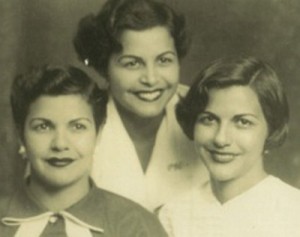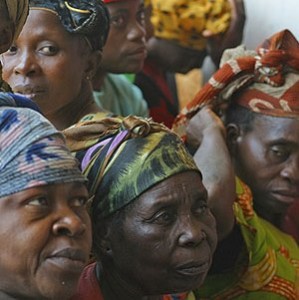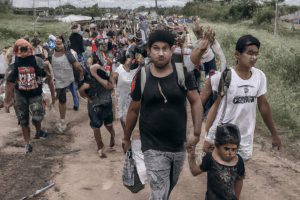When the Mirabal sisters – Minerva, Patricia and Maria Teresa- took up the cause of justice in the 1950s in their native Dominican Republic, they had no idea that they would be the catalyst for a wider international movement for social justice. Their activism against the corrupt and unjust regime of Dictator Rafael Trujillo (1930-1961) led to charges of treason and their eventual assassination on November 25, 1960. Fellow activists have, since 1981, marked this date, November 25, as a day of reflection and action: a day against violence against women.

The 1999 decision of the UN’s General Assembly to adopt a resolution tabled by the Dominican Republic, calling for the designation of November 25 as International Day for the Elimination of Violence against Women was a landmark one and today women and men the world over are expressing their concern and registering their disgust about a social scourge which has already reached epidemic proportions. In so doing, they are, at the same time, raising public awareness of the problem and offering possible solutions to reduce and eventually eliminate the incidence of acts of violence against all women and by extension girls.
Significantly, the International Day for the Elimination of Violence against Women, is aligned to16 Days of Activism, a campaign to raise awareness about gender-based violence, to understand women’s rights as human rights, to strengthen local activities around the issue, to establish links between international, regional and local work, to provide a forum through which strategies for change can be developed and shared and to pressure governments to take action in the interest of women by protecting their rights. It is no accident, then, that the 16 Days of Activism ends on December 10, commonly known as Human Rights Day, given that the UN’s Universal Declaration of Human Rights was promulgated on that day.
There is no denying that this annual activity has worth. Women look forward to having their voices heard and carefully plan their activities to pressure governments to fulfil broken promises and to guarantee the security and protection of women since the state is entrusted with the responsibility of protecting all its citizens.
However, history has shown that the struggle against violence against women is a more complex one that will require an interrelated 365-day approach. For even with a designated day for protest, women (and girls) continue to be victims of violence in both the private and public spheres at an alarming rate. The statistics in this regard are well known and there is no need to repeat them here. But suffice it to say, the UN Women’s country by country statistics we see that in the Caribbean, for example, women in Barbados and Antigua who were physically assaulted by an intimate partner was 30 per cent each, in New Zealand, 35 per cent. In India bride burning or dowry deaths take place every two hours, and South Africa records the highest statistics on gender-based violence.
Since human rights embrace the social, the political, the economic and the cultural in an ongoing dynamic, as the Mirabal sisters have shown, then it is our view that the elimination of violence against women does not rest only on pockets of resistance or sporadic activism given the very nature and prevalence of such acts.
It is our view, therefore, that such a social concern must be addressed simultaneously and on an ongoing basis in both the private and public spheres by undermining notions of ‘man the head of the household’ theory received from the different religious texts, and by continuously challenging the structures and institutions of society which ignore or accommodate, through ideological conditioning and socio-political indifference, the perpetuation of that social ill: Government, School, Family and Religious institutions and organisations.
This is common knowledge and the International Day for the Elimination of Violence against Women reminds us each year of this socio-political nonchalance which creates a wall to the promotion of human rights as a critical element in ensuring freedom, justice and peace.
However, while November 25 highlights gender-based violence, a critical element is missing from the violence against women text and context: that of race-based violence against women which is often unacknowledged in international, regional and national women’s and social movements. Of particular note in this respect, is its absence from the 1995 Beijing Platform of Action which defines violence against women as “any act of gender-based violence”.

This is unfortunate because when one factors a woman’s race into the matrix of women’s experiences, then a new story is being told. Gender and race are not mutually exclusive but combine to form part of a woman’s identity (along with class, ethnicity, and nationality) and is the basis for the double (and multiple) discrimination Black women of African origin, African women, Asian women, Aboriginal and native women face.
In the Americas, for example, race-based violence against women is historical. The Black woman suffered the race violence (and this includes sexual violence) of the white man, the race violence of the white woman and the gender-based violence of the Black man. In the history of Western expansionism and empire, colonialism and slavery with their “ideological accessories” – Christianity and the Church- provided fertile soil for the germination and spread of race-based violence against women. Sexploitation, forced ‘breeding’ of generations of slaves and later workers, denial of civil and human rights, commoditisation of body and self, destruction of the family, mental, physical, emotional and psychological torture were at the core of the destructive system of colonial domination.
This is a history which should be common knowledge for all women of the Americas. It is no different in the contemporary period: only that it has taken additional forms (keeping up with the times) but the essence remains the same. Harassment by the agents of the state and race profiling in some jurisdictions, harassment, social exclusion, and the depersonalisation are just some of the indignities Black, Asian, African, Aboriginal and Native women face.
While it is necessary to fight against gender-based violence, women must also struggle against race-based violence which is even more pernicious than gender-based violence, given that race takes precedence over all social else.
In this the 21st Century, let us as women put on the agenda the elimination of race-based violence and channel our energies towards the elimination of racism and racialism internationally, regionally and locally and even in women ’s movements wherever they exist.
Let today be a day of serious reflection and a renewed commitment to social justice.
Judith Soares, is Tutor/Coordinator of the Women and Development Unit, The University of the West Indies


About Judith Soares
JudithSoares,PhD,istheheadoftheUniversityoftheWestIndies'WomenandDevelopmentUnit.










